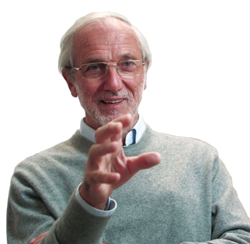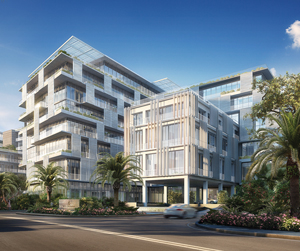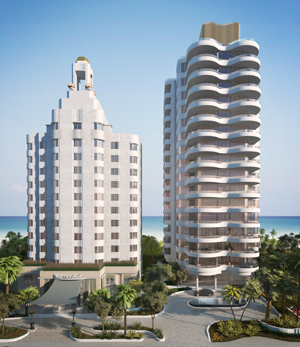Miami-Dade is an international hotspot. About 55 percent of the county’s population is foreign-born and it was foreign investors who reenergized Miami’s real estate market following the fall of Lehman Brothers and the ensuing financial crisis.
Yet despite the area’s global appeal, most developers have been content until recently with retaining local architects to design their buildings.
Not anymore.
An increasing number of private developers are looking all over the world for architectural superstars to design their products. Rodolphe el-Khoury, dean of the University of Miami School of Architecture, said local developers are casting a “wide net” for acclaimed architects. The hunt is also a “recent phenomenon,” which started taking place in earnest within the last three years, he added.
“A lot of developers now see a value in having one of those big name architects designing their building,” el-Khoury told The Real Deal.
A lot of that value is promotional. But not all of it. “You can say that this is just a fad and it’s all about marketing and branding,” el-Khoury said, “but that is a limited, cynical view. It is really about delivering a better product.”
David Martin, president of the development firm Terra Group, said he appreciates the knowledge that renowned foreign-born architects bring to a project. “I learned how to be a better developer,” Martin said. “That’s why we work with some of these amazing people and why we want to bring them to Miami to learn our city and our ecosystem.”
Below, meet some of the architects from abroad who have recently entered Miami’s market.
Renzo Piano

Renzo Piano
In the course of his 51-year career in architecture, Italian architect Renzo Piano has won several accolades for his work, including the Pritzker Architecture Prize, which is basically the Pulitzer Prize for architecture.
Piano’s firm, the Renzo Piano Building Workshop, has designed more than 120 projects across the planet, including the Menil Collection in Houston, the Tjibaou Cultural Center in New Caledonia, the Kansai International Airport Terminal in Osaka, London Bridge Tower (the Shard) in London and the new Whitney Museum in New York.
Now Piano, 78, has finished plans for his first condo project in Miami.
“He is just an amazing gentleman,” said Martin. “He’s someone who has accomplished so much.”
Martin said Piano was the perfect man to design Eighty Seven Park, a future 233-foot-tall oceanfront luxury condominium tower in Miami Beach at 8701 Collins Avenue, where units are being marketed for as high as $20 million.
“Renzo has worked all over Europe building these amazing museums and structures,” Martin said. “And what I found in every project he did is that it’s connected to nature.”
That was one of the reasons Martin sought Piano to build a “simple and elegant” building that would match the green natural surroundings that can be found in nearby North Shore Open Space Park, as well as the development’s own two-acre private park. “It was truly an honor to work with him.” Martin said.
Thomas Juul-Hansen
Thomas Juul-Hansen, 46, was born in Copenhagen and journeyed to Miami at the age of 18, soon after graduating high school in Denmark.
“It was supposed to be a short period of time,” Juul-Hansen, who ended up staying for nearly six years, told TRD. “I ended up liking this country a lot more than Denmark,” he said.
It was at the University of Miami where Juul-Hansen got his undergraduate degree in architecture. He went on to get his master’s degree in architecture at Harvard and wandered the States for a while, before landing a job at Richard Meier and Partners in New York. He later set up his own practice in the Big Apple, designing condos for billionaires.

Three Hundred Collins
His first design project in South Florida is Three Hundred Collins, a 19-unit South Beach boutique condo that’s being developed by Jason Halpern, the founder and managing partner of JMH Development.
“It’s always interesting to try and decipher what the DNA is for the site you’re working at,” Juul-Hansen said. “We were trying to figure out what Miami Beach is all about, what the architecture of Miami Beach is all about, and then find our own interpretation.”
What he came up with was a building with deep balconies that are big enough to create an outdoor living room and a 75-foot long private rooftop pool. Juul-Hansen plans to collaborate with Halpern again for a future condo project in Surfside.
“Miami is all about the outdoors” he said. “We would like to do more projects here, especially in the winter time.”
Ricardo Bofill
Ricardo Bofill, a Spanish architect who founded Taller de Arquitectura in 1963, has designed government buildings, theaters, airports, train stations, retail centers, hotels, apartment complexes, condominiums and office towers.
Those projects can be seen all over the world, including in Spain, Sweden, Kazakhstan, Saudi Arabia, Abu Dhabi, Iraq, Israel, Lebanon, China and Japan and in countries in South America and states in the U.S., too.

Ricardo Bofill
But in South Florida, Bofill’s contribution to date has been limited to designing a waterfront mansion for Mexican singer Paulina Rubio.
That’s about to change. Camilo Miguel, Jr., the chief executive officer of Mast Capital, retained Bofill to create 3900 Alton Road, an eight-story luxury condo development in Miami Beach set to break ground in 2017.
Miguel told TRD in an email exchange that he obtained Bofill’s architectural services because “it was important to have someone whose talents aligned with our vision of elegant simplicity while also integrating the highest quality.”
The 76-year-old architect’s reputation doesn’t hurt either. “The arrival of an architect like Ricardo Bofill signifies how dynamic and exciting the South Florida market has become,” Miguel noted.
Bofill said his design for 3900 Alton Road was inspired by water.
“When first visiting the site, I immediately thought of the surrounding water and I imagined a transparent building, a fluid floating weightless object,” the architect told TRD. “The challenge was to make a contemporary yet classical design.”
The result is a layer L-shaped building with a “glass-skin, connecting streams where energy and space flow,” Bofill said. “Gardens are introduced to create an ecological scheme that not only makes the building more sustainable but allows the building to become alive.”
Piero Lissoni
Piero Lissoni always wanted to work in metropolitan Miami. He just never had the chance until recently. According to the 60-year-old Italian architect, as recently as 10 years ago most private projects were restricted to South Florida-based architects.
“Now a lot of architects are starting to work in Miami,” Lissoni told TRD. “They’re designing new museums, new theaters, new public spaces, new schools and, of course, new homes.”
For the last 30 years, Lissoni and his Milan-based firm, Lissoni Associati, has designed hotels, apartments, offices, showrooms, houses and even yachts all over the globe. Lissoni’s entry into South Florida’s real estate market was via Lionheart Capital. In 2012, the Miami-based real estate development firm hired him to design the Ritz-Carlton Residences Miami Beach by Surprise Lake. His task: help convert the former Miami Heart Institute into a 111-unit luxury condo complex.

Ritz Carlton Residences Miami Beach
It was a long process, one that is scheduled to finally end in late 2016. The challenging job earned Lissoni several admirers and, more importantly, additional assignments. Among those jobs is the 28-story Oceana Bal Harbour and the 53-story ONE Paraiso in Miami’s Edgewater. Both projects are due for completion in 2017.
Isay WeiNfeld
Isay Weinfeld, 64, knows how to create aesthetic hideouts in dense urban environments, according to Josh Weissenstein, a director at New York-based HFZ Capital Group. That is one of the main reasons HFZ hired the Brazilian architect to design the transformation of South Beach’s Shore Club into the first Fasano-branded project in the U.S. and, incidentally, Weinfeld’s first project in South Florida.
“His appreciation for the harmonious relationship between indoor and outdoor living pairs perfectly with our vision for Fasano Miami Beach,” Weissenstein told TRD by email. That vision, as described by Weissenstein, was the creation of a three-acre “oasis” for 67 condo units and 85 hotel rooms.
It helped that Weinfeld’s extensive portfolio includes designing the flagship Fasano Hotel in São Paulo, the Fasano Las Piedras “hospitality complex” in Uruguay and the Fasano-branded Fazenda Boa Vista residential resort in Porto Feliz, Brazil.
“Isay’s rich history with the Fasano brand fuels his excitement for bringing the brand to the U.S. with us in Miami Beach,” Weissenstein noted.
Brandon Haw
When you build new projects along the historic Collins Avenue in Miami Beach’s Mid-Beach neighborhood, you have to make sure they fit within the corridor’s dynamic architectural tapestry, Brandon Haw said.

Faena Versailles Contemporary
The 55-year-old architect from London compared such a task to arranging a chess board with black and white pieces. While the pieces have different shapes and functions, Haw noted, you can’t just place a red chess piece in the middle of the board.
Haw spent the last 26 years at Foster + Partners, an innovative architecture firm led by the renowned British architect Norman Foster. As a senior partner, Haw supervised the designing of Hearst Tower in New York, HSBC’s United Kingdom headquarters in London and the Commerzbank Headquarters in Frankfurt.
In 2013, Foster put Haw in charge of designing the 18-story Faena House in Miami Beach, where residences were reportedly fetching an average price of $3,130 a square foot as of February.
In 2014, Haw left Foster + Partners to form his own New York-based firm, Brandon Haw Architecture. Soon afterward, Argentine developer Alan Faena retained Haw to build Faena Versailles Contemporary, a 16-story condo tower just a block away from Faena House in Miami Beach, with views of the ocean from aerodynamic balconies designed to generate less wind pressure.
Haw said he’s talking to “a small number of people” to build additional projects elsewhere in South Florida and that he’s particularly interested in boutique offices or institutional buildings.
“It’s not all about high-end residential,” he said. “A city environment is made up of many different components.”
